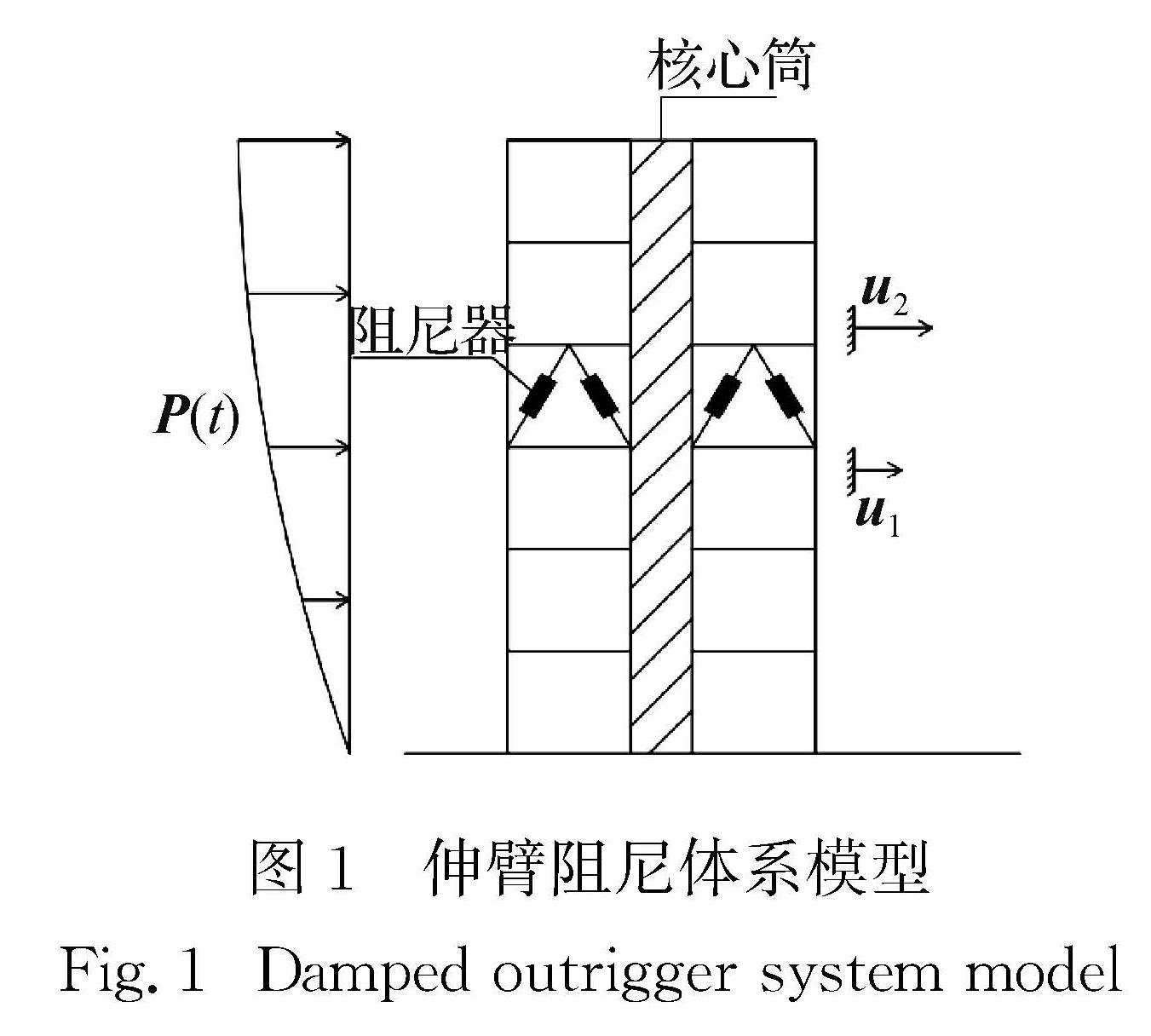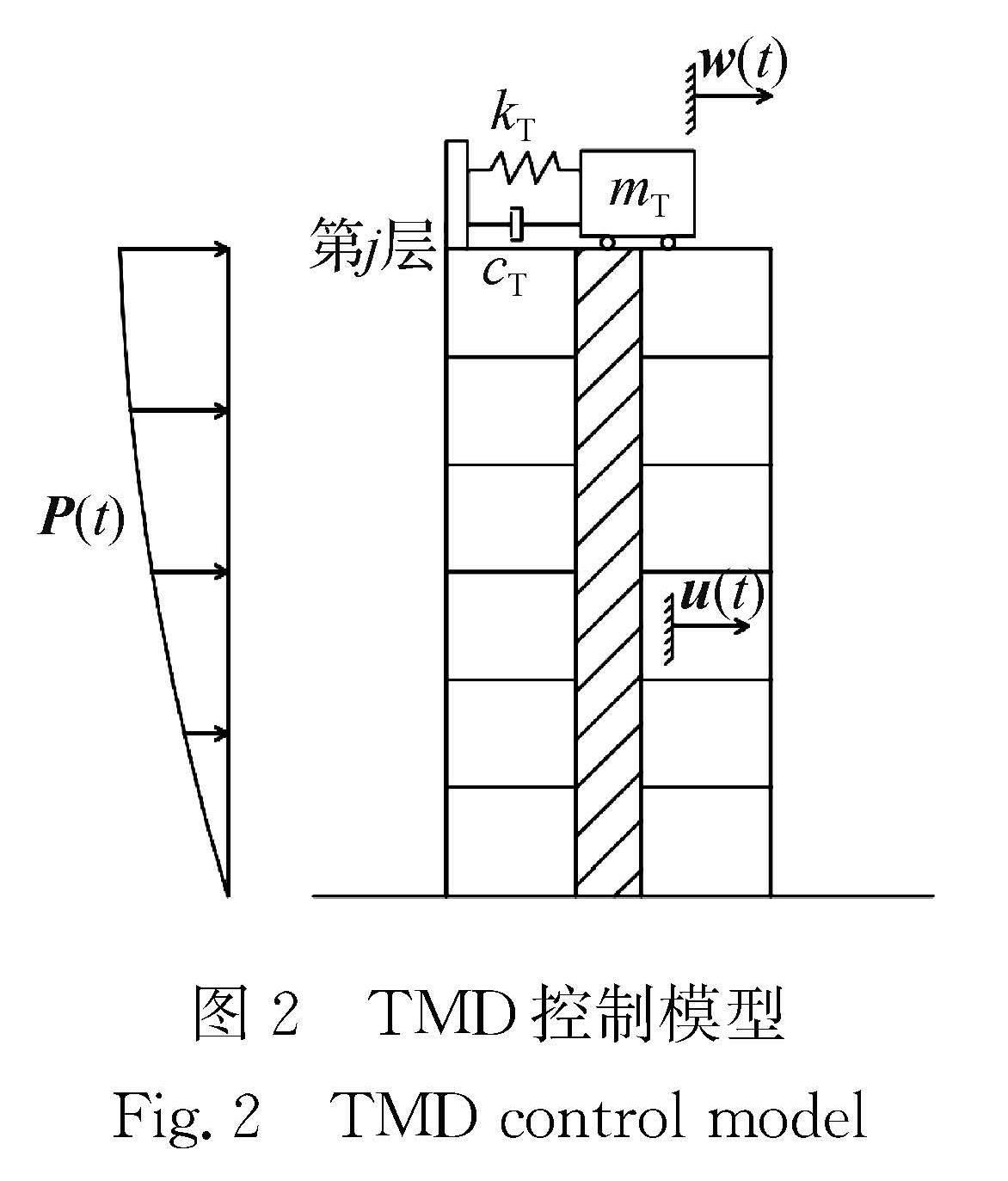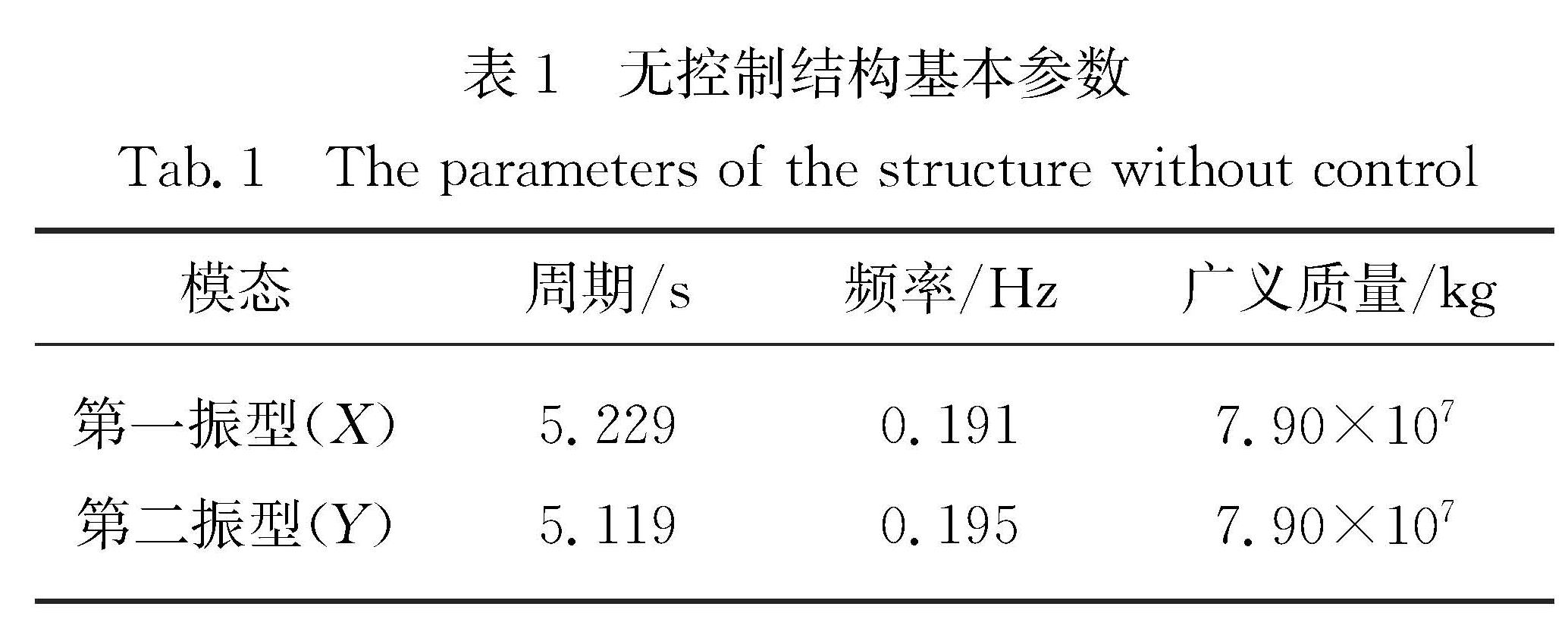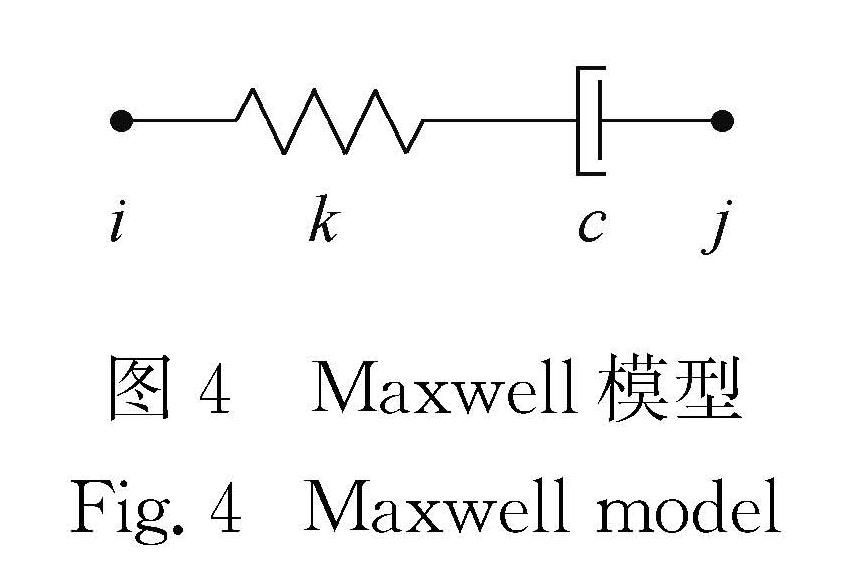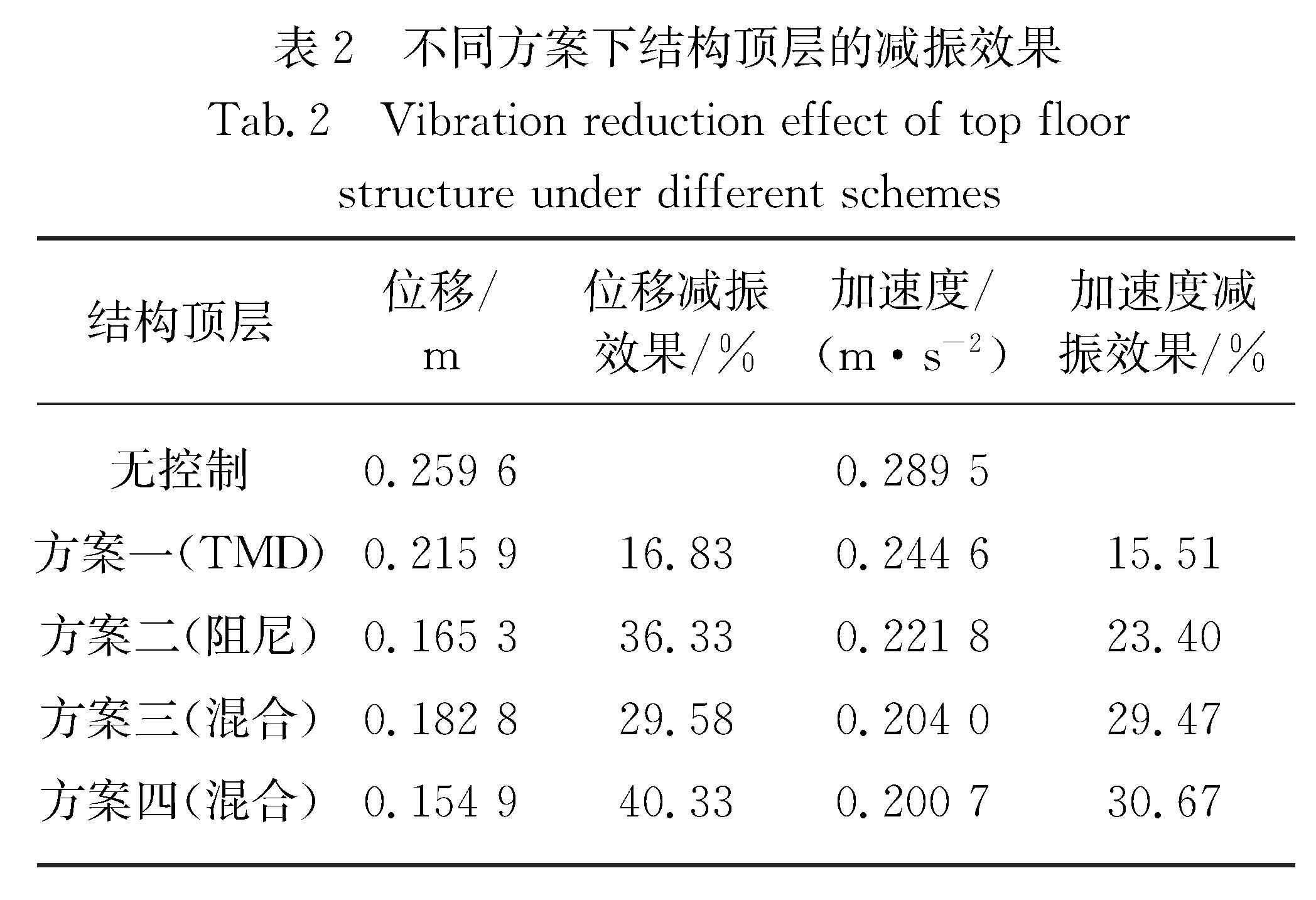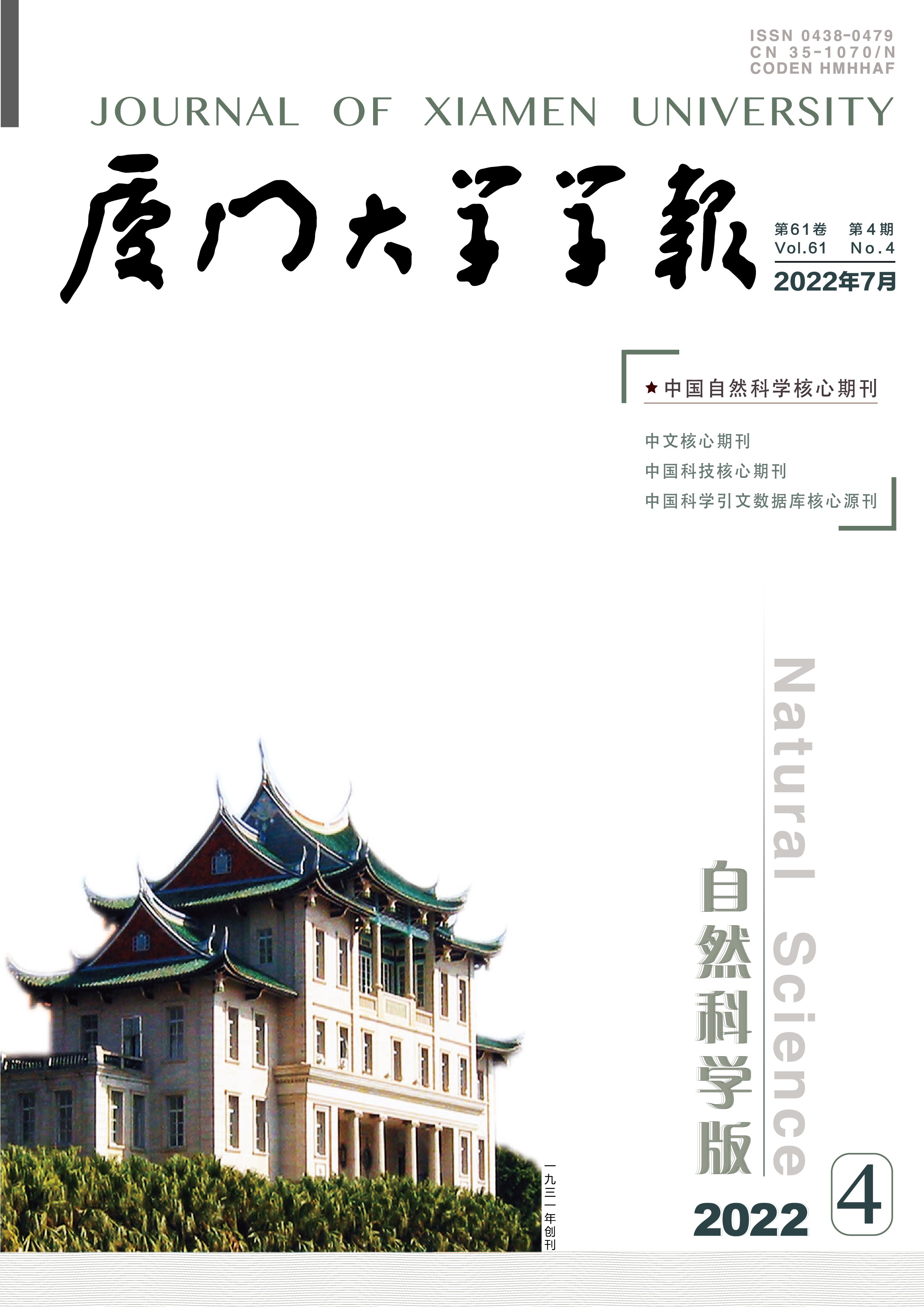通信作者:zhangjl@ xmu.edu.cn
风荷载对超高层建筑结构的安全性和舒适性有着重要的影响,研究超高层结构风振控制方法具有较大的工程实用价值.本文选用一栋高304.2 m且带有伸臂加强层的超高层建筑作为算例,设置调谐质量阻尼器、伸臂加强层阻尼体系以及两者混合控制的方案进行三维有限元建模计算,对比不同控制方法的控制效果.结果显示:调谐质量阻尼器的控制效果较其他方案稍弱,设置伸臂加强层阻尼体系和混合控制方案都能显著降低结构的风振响应,混合控制方案仅从控制效果方面来看在所给的四种方案中最优.
Objective: Wind loads exert an important influence on the safety and the comfort of super high-rise buildings. Naturally, studies of wind-induced vibration control methods for these structures will offer great engineering practical values. In this study, we compare and analyze the effect of tuned mass damper (TMD), damped outrigger system, and hybrid control on wind-induced vibration control of super high-rise buildings.
Methods: A 304.2m super high-rise building assembled strengthened story is selected as an example, and its three-dimensional finite element model is established by using ETABS software. The wind-load time-history function obtained from the wind tunnel test data is used for simulations. We then set four wind-induced vibration control schemes in the example. Scheme 1: TMD is set at the top of the structure; Scheme 2: several nonlinear viscous dampers are set at the 32nd floor and 64th floor of the structure; Scheme 3: refer to scheme 2 to set dampers on the 32nd floor of the structure, and set TMD on the top floor of the structure according to scheme 1; Scheme 4: combining scheme 1 and scheme 2.
Results: Simulation results show that the acceleration of the top floor of the structure without control equals 0.2895m/s2, which cannot meet the comfort requirements of the code. After adding wind-induced vibration control measures, the dynamic response of the structure secures different degrees of attenuation, and the energy dissipation device effectively dissipates part of the energy. Scheme 1 reduces the displacement of the structure by 16.83% and the acceleration by 15.51%; Scheme 2 reduces the displacement of the structure by 36.33% and the acceleration by 23.4%; Scheme 3 reduces the displacement of the structure by 29.58% and the acceleration by 29.47%; Scheme 4 reduces the structural displacement by 40.33% and the acceleration by 30.67%. From the displacement control effect, setting TMD exerts a certain effect on structural displacement control, but slightly more weakly than other schemes do. The effect of damper on structural displacement control appears beneficial. In practical engineering, due to the influence of member bearing capacity and the structure, the mass of TMD cannot be magnified infinitely. Therefore, it can achieve satisfactory vibration reduction effects by adding dampers. In terms of speed and acceleration control, each scheme performs satisfactorily, permitting the main structure to meet requirements of safety and comfort under wind vibrations. Schemes with mixed controls outperform those with single setting. However, with the increase of the number of dampers, the control efficiency is not significantly improved. Therefore, in practical applications, the number of dampers should be determined by integrating the cost, control effects, and other factors.
Conclusions: Both the damped outrigger system and the TMD control system can effectively weaken the structural dynamic responses and dissipate energy to meet the requirements of the code for structural comfort. The hybrid control scheme is optimal merely in terms of the control effect. In displacement control, the control effect is improved with the increase of the number of dampers. However, in speed and acceleration control, the increase of the number of dampers in the hybrid control scheme does not significantly improve the control effect.Therefore, in the wind-induced vibration control design optimization, the efficiency of merely increasing the number of dampers is limited, and more schemes should be considered and tested comprehensively. In the selection of vibration reduction schemes for super high-rise buildings with similar structures, if the TMD Control effect cannot meet requirements, dampers can be added at the boom strengthening layer to further optimize the control and to save the building space so that requirements of safety, economy, and other aspects can be met.


